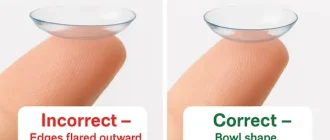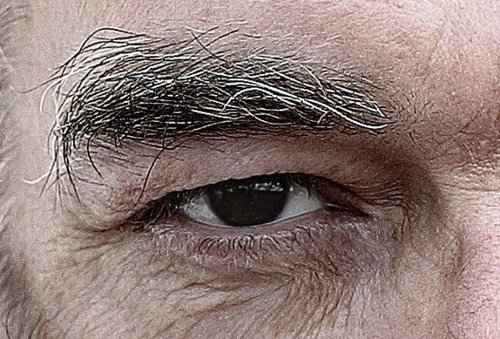Visual acuity refers to how clearly your eyes can see fine detail, essentially measuring the sharpness of your vision. It’s like checking how well a camera focuses — even a slight blur can change how you perceive the world. Understanding this concept lays the groundwork for recognizing when something in your eyesight needs attention.
When people talk about visual acuity that gradually changes with time, they’re touching on an issue that affects millions. According to public health estimates, more than 12 million Americans over age 40 live with some level of vision impairment, often linked to uncorrected refractive errors and aging-related changes. These shifts become more common with age, making routine eye exams an important part of maintaining long-term eye health.
About 60% of people over age 40 develop presbyopia — a natural decrease in near-focus ability. It’s a normal part of aging and often begins with the need for reading glasses.
When ambient light drops below 300 lux, visual recognition accuracy decreases by about 25%. Adequate lighting helps reduce strain and improves focus for reading and computer work.
A diet rich in lutein (10 mg/day) and zeaxanthin (2 mg/day) can lower the risk of age-related macular degeneration by about 25%. Colorful vegetables like spinach and kale are top sources.
After a routine day, especially when someone notices they’re straining to read signs or screens, that subtle decline in sharpness can raise questions. This is exactly why it’s worth taking a closer look at what affects visual acuity, how symptoms show up, and what steps can help restore clarity. A clear understanding of these factors sets the stage for exploring the causes and solutions in detail.
How Visual Acuity Is Measured: From Snellen Charts to Digital Tests
Traditional testing uses the Snellen chart—a familiar wall chart with rows of letters decreasing in size. The patient stands 20 feet away (6 meters) and reads the smallest line they can. If they read the 20/20 line, it means normal sharpness. If they only manage the 20/40 line, it means what they see at 20 feet, a person with normal vision sees at 40.
Modern diagnostics, however, have gone digital. The LogMAR chart offers more accurate results for research and clinical studies, while ETDRS (Early Treatment Diabetic Retinopathy Study) charts are used for standardized vision testing in medical trials. Advanced digital systems like Zeiss VISUSCREEN 100 and EyeNetra NetraPro use tablets or VR interfaces to test vision quickly and precisely ⧉.
| Method | Accuracy (1–10) | Avg. Cost (U.S.) | Time (minutes) |
|---|---|---|---|
| Snellen Chart | 6 | $30–50 | 5 |
| LogMAR Chart | 8 | $40–60 | 10 |
| Zeiss VISUSCREEN 100 | 9 | $70–90 | 7 |
| EyeNetra NetraPro | 9 | $50–80 | 5 |
| ETDRS Chart | 10 | $100+ | 15 |
These newer systems also reduce examiner bias and are ideal for telemedicine—something that grew exponentially after 2020.
Factors That Affect Your Visual Acuity
Several factors influence how sharp your vision is. Lighting plays a big role; poor or overly bright light can make the eyes work harder. Fatigue, dehydration, and even screen glare can also temporarily reduce acuity. Conditions such as cataracts, macular degeneration, and glaucoma cause more permanent decreases.
Systemic diseases like diabetes and hypertension may affect the retina and optic nerve, resulting in fluctuating or blurred vision ⧉. Meanwhile, excessive screen time—a modern epidemic known as digital eye strain—is responsible for about 60% of reported vision discomfort among U.S. adults according to the American Optometric Association.
A real case: A 47-year-old software engineer from Austin, TX noticed constant eye strain after long coding sessions. An eye exam revealed mild astigmatism and early presbyopia. After corrective lenses and better monitor lighting, his symptoms nearly disappeared. Reyus Mammadli, a medical consultant, notes that “regular micro-breaks and blue-light filters can make a world of difference.”
Diagnostic Innovations in Vision Testing
Diagnostics have evolved rapidly with the help of AI and digital imaging. Devices like Topcon KR-1W Wavefront Analyzer and NIDEK ARK-F now perform multi-parameter assessments—measuring refraction, keratometry, and corneal topography in under a minute.
AI-based refraction testing, powered by algorithms such as those used in PlenOptika QuickSee, provides results comparable to traditional autorefractors but in portable, battery-operated units. These tools are particularly valuable for rural clinics or school screening programs ⧉.
| Diagnostic Method | Accuracy (1–10) | Avg. U.S. Cost | Technology |
|---|---|---|---|
| Autorefractor | 8 | $50–80 | Infrared sensors |
| Wavefront Analyzer | 9 | $100–200 | Aberrometry |
| AI-based QuickSee | 9 | $60–90 | Machine learning |
| VR Vision Testing | 8 | $40–70 | Virtual reality |
According to Reyus Mammadli, the integration of AI in eye diagnostics has significantly improved early detection rates of refractive disorders and diabetic retinopathy.
Treatment and Correction Options
5.1 Glasses and Contact Lenses
Eyeglasses remain the simplest and safest solution for correcting refractive errors. Modern lenses use materials like polycarbonate and Trivex, which are lightweight and impact-resistant. Brands such as Essilor and Zeiss offer anti-reflective coatings, blue-light protection, and even adaptive tints. Contact lenses come in various types—daily, monthly, toric (for astigmatism), and multifocal. Average cost: $150–400 per year.
5.2 Laser Vision Correction
LASIK, PRK, and SMILE are leading laser procedures. LASIK (Laser-Assisted in Situ Keratomileusis) uses precise corneal reshaping to improve focus, with a success rate above 95%. Devices like Alcon WaveLight EX500 and Zeiss VisuMax deliver micron-level precision. Recovery typically takes 24–48 hours. Average U.S. cost: $2,000–3,000 per eye ⧉.
5.3 Implantable Lenses and Surgical Innovations
For patients with severe refractive errors or thin corneas, phakic intraocular lenses (IOLs) like EVO ICL (STAAR Surgical) are used. These lenses are implanted behind the iris but in front of the natural lens. Results show 99% patient satisfaction rates. Costs range from $3,500 to $5,000 per eye. Another innovation, Refractive Lens Exchange (RLE), replaces the natural lens entirely—an option often chosen by patients over 50.
When Should You Get Your Eyes Tested?
Routine vision exams should begin early. Pediatricians recommend testing at age 3, then before starting school. Adults under 40 should have a full eye exam every 2 years, while those over 40—especially with diabetes or hypertension—should go annually ⧉.
Symptoms that warrant immediate testing include blurred or double vision, sudden flashes of light, or persistent eye discomfort. Reyus Mammadli emphasizes that “missing regular checkups is like ignoring the warning lights on your car—sooner or later, it’ll cost you more.”
Simple habits help maintain sharp vision: keep good lighting, avoid excessive screen time, eat foods rich in lutein and omega-3s, and always wear UV-protective sunglasses outdoors.
Real-Life Case Insights
A 34-year-old woman from Seattle noticed blurred night vision and glare while driving. Diagnosis: early keratoconus. After corneal cross-linking using Avedro KXL System, her condition stabilized within six months, preventing the need for a corneal transplant.
A 62-year-old man from Miami reported double vision after cataract surgery. Further testing revealed lens misalignment, corrected with a simple outpatient procedure. His vision returned to 20/25 within weeks. Both cases underline the importance of precise diagnostics and follow-up care.
Editorial Advice
Reyus Mammadli, medical consultant, reminds readers: maintaining visual acuity is not a one-time act but an ongoing responsibility. He recommends regular checkups, balanced digital habits, and investing in quality eye protection.
For people who spend hours on screens, consider the 20-20-20 rule: every 20 minutes, look at something 20 feet (6 meters) away for 20 seconds. And if your vision feels off—don’t Google-diagnose it; book a professional exam instead.
After all, clear vision isn’t just about seeing better—it’s about living better.





